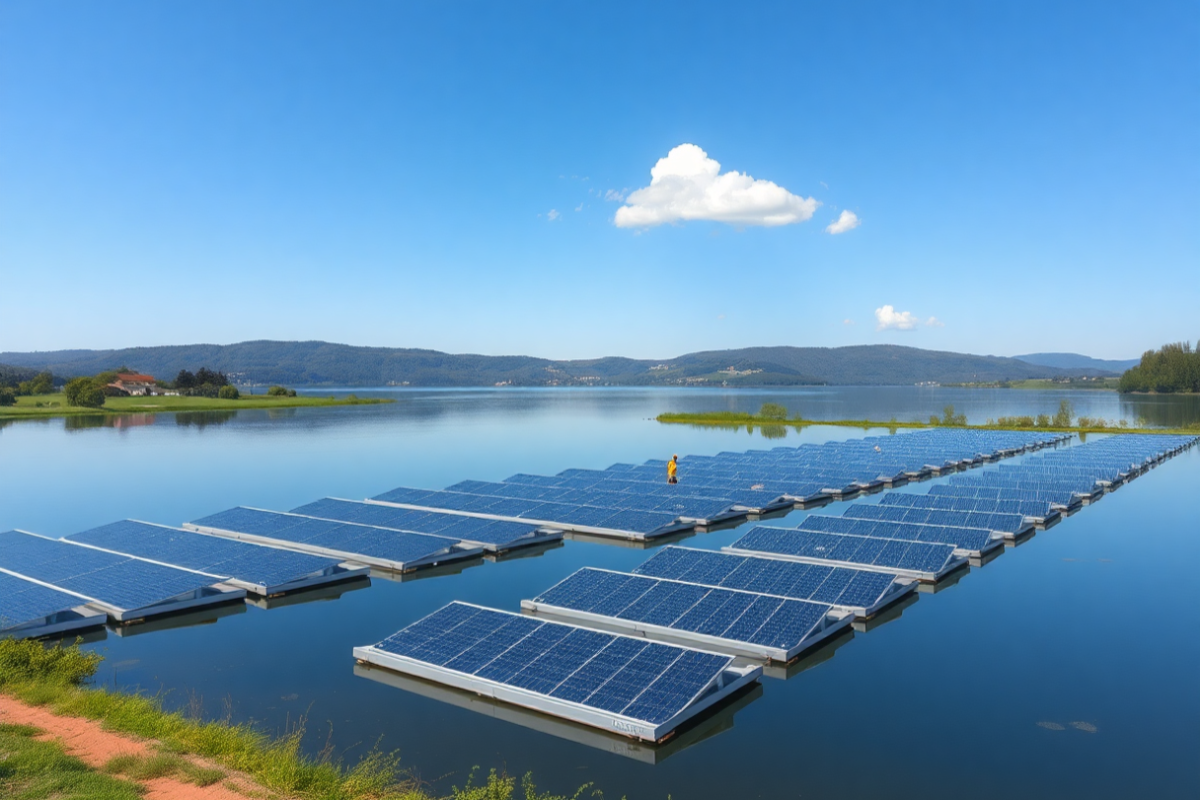

The Solutions Explorer lets you create alerts that match your needs. You can create several alerts and you will receive a notification each time a new Solar Impulse Efficient Solutions is labelled and matches your filters.
Your Search Alerts will show up here.
Sign in to create alerts for your filters and search terms.
Sign inDon't have an account?
Sign upOctober 1, 2019
AKUO
Piolenc

France's first floating solar power plant was inaugurated in October 2019 in Piolenc, Vaucluse, on a quarry lake. The Piolenc plant required an investment of 16 million euros, and was partly financed by a participatory financing campaign open to Vaucluse residents, with the participation of the town council. It took Akuo Energy 10 years to complete the project, which is based on floating solar panel technology Hydrelio.
With an impressive output of 17 MW, the solar power plant is equipped with a total of 47,000 photovoltaic panels, making it one of the significant contributors to renewable energy generation in the region. The sheer scale of the plant allows it to harness the sun's energy efficiently, converting it into electricity that can be used to meet the needs of 4,700 homes.
The solution aims to respond to the ground-mounted and rooftops systems issues. It is particularly interesting in areas where land is scarce and/or particularly expensive, for various reasons: necessity to preserve agricultural lands, in areas with a high population density, in small or island countries, in countries with lots of mountainous area Hydrelio® also tries to solve the issue of unused water surfaces for a positive purpose like generating green energy. Moreover, floating solar energy production and energy consumption can get closer to grid infrastructures as Hydrelio® can be placed in many water surfaces. The technology reduces solar exposure of water, therefore limiting water evaporation and also reducing algae growth and eutrophication which deteriorate the water’s quality. It is particularly interesting for irrigation ponds, dams or drinking water reservoirs for examples. Furthermore, solar cells are more efficient thanks to the natural cooling effect of the water.
Share
The information set out above, is solely for the purposes of information and the Solar Impulse Foundation does not provide any guarantee as to its authenticity, completeness or accuracy. This information does not constitute investment advice or a recommendation to buy into, transact or to enter into any agreement with any of the parties or persons mentioned above. Potential investors or interested parties are solely responsible for their investment or business decisions and for performing any due diligence required by the circumstances. The innovator has asserted ownership of the intellectual property rights for images, videos, and content showcased above, affirming full and unrestricted usage rights, and has provided explicit permission for the Solar Impulse Foundation to publish such information designated as "public" in the application form.